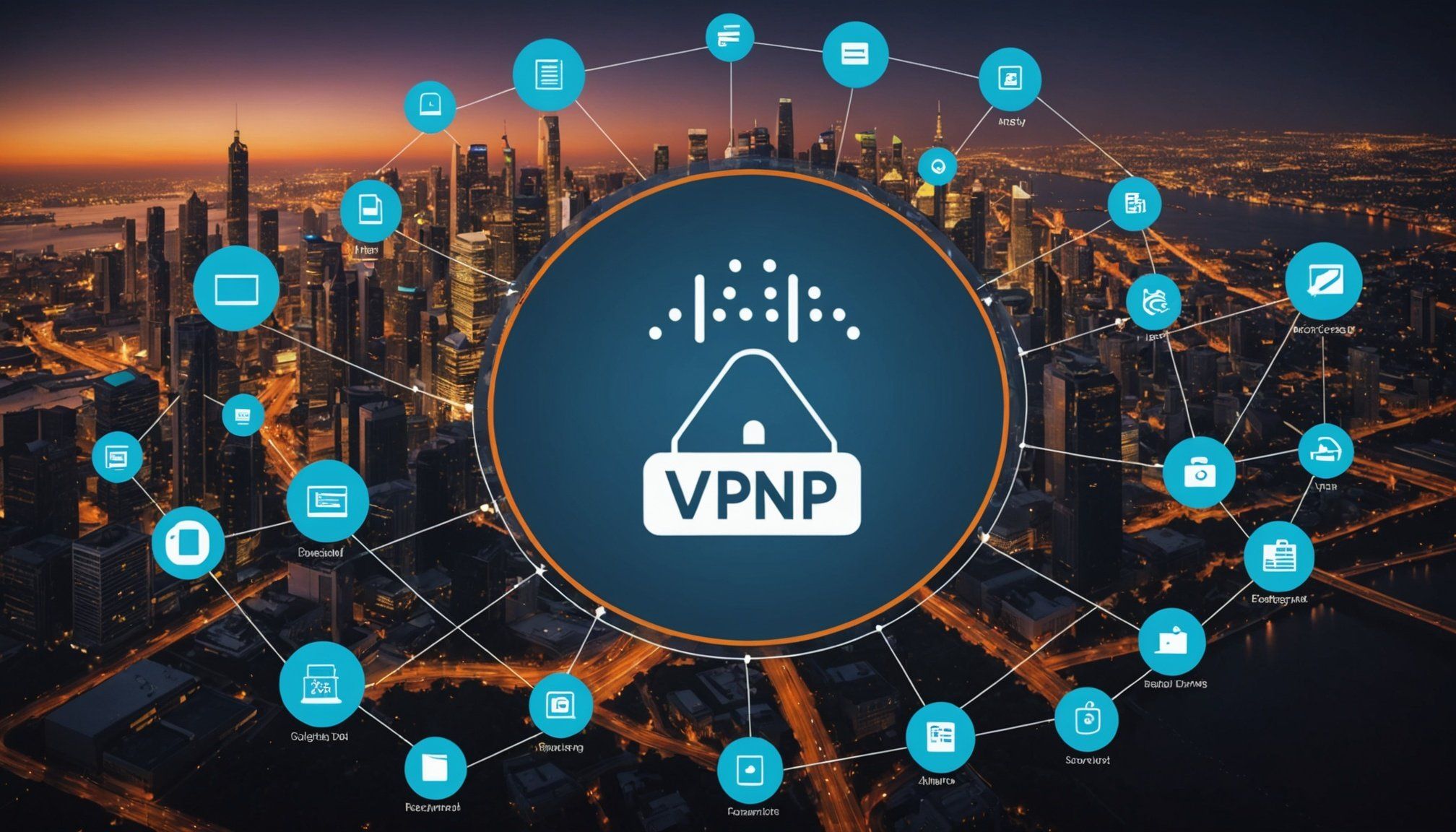Overview of Cisco AnyConnect VPN
The Cisco AnyConnect VPN is a versatile and secure solution designed for enterprise networking environments. It provides remote workers with easy access to corporate resources through secure, encrypted connections. An important feature of Cisco AnyConnect is its adaptability, offering consistent user experience across various devices and operating systems. The VPN efficiently supports multiple access methods, enhancing flexibility.
In enterprise environments, VPNs like Cisco AnyConnect play a crucial role in safeguarding sensitive data and maintaining privacy. They ensure remote users can securely access networks from anywhere, supporting business continuity.
In the same genre : Mastering Redis: The Definitive Guide to Creating a Robust Cluster with Sentinel Support for Unmatched Reliability
When comparing Cisco AnyConnect with other VPN solutions in the market, several factors stand out. While many VPNs offer basic encryption, Cisco AnyConnect goes further with advanced tunneling protocols and multi-factor authentication, bolstering security. Its seamless integration with existing infrastructure and support for diverse network environments make it a preferred choice for enterprises.
Moreover, Cisco AnyConnect’s adaptive security policies and automatic updates ensure continuous protection against evolving threats. While different VPNs might focus on specific features, Cisco AnyConnect offers a comprehensive suite that addresses the broad security and connectivity needs of modern enterprises.
Additional reading : The Comprehensive Blueprint for Building a Robust and Scalable Kafka Cluster on Google Cloud Platform
Installation Process
Setting up Cisco AnyConnect begins with ensuring your system meets the software requirements. To achieve optimal performance, verify compatibility with your device’s operating system, and confirm sufficient memory and disk space are available. Cisco AnyConnect supports both Windows and macOS, necessitating specific system requirements for each platform. Windows users must have at least Windows 7, while macOS users need macOS 10.12 or later.
The installation process varies slightly between operating systems but generally follows similar steps. Begin by downloading the Cisco AnyConnect installer from your corporate portal or Cisco’s official site. Run the installer and follow the on-screen instructions to complete installation. This typically involves accepting the license agreement and selecting appropriate components.
Despite the straightforward installation, users may face common issues. Problems such as connectivity errors often arise from firewall settings. If these persist, disable any conflicting software temporarily during installation. Ensuring you have administrative privileges can also resolve certain installation issues.
Documenting these steps and potential troubleshooting measures ensures a smoother deployment process, essential for an enterprise’s VPN setup success. Offering resources, such as user guides and support contacts, can further aid users encountering difficulties.
Configuration and Setup
Proper configuration of Cisco AnyConnect is crucial for seamless connectivity in enterprise environments. Start by configuring VPN profiles and connection settings. These profiles dictate how users connect to your network, defining parameters such as authentication methods and network access policies. A well-defined profile ensures consistency and security across user connections.
Next, consider the integration of Cisco AnyConnect with your existing network infrastructure. This integration may involve synchronising with Active Directory for user management or configuring compatibility with firewall and router settings. Such measures streamline network operations and maintain security.
To comply with enterprise security policies, ensure your configuration meets organisational standards. This includes enabling strong encryption protocols, implementing multi-factor authentication, and regularly updating security settings. Adhering to these policies protects sensitive data and mitigates risk.
Remember the essential role of documentation. Detailed guides on Cisco AnyConnect configuration help IT teams replicate settings across devices and troubleshoot potential issues effectively. Comprehensive documentation also facilitates compliance with industry regulations, maintaining audit-readiness. This attention to detail ensures that your Cisco AnyConnect deployment is robust, secure, and fully aligned with enterprise requirements.
Troubleshooting Common Issues
Encountering issues with Cisco AnyConnect can be frustrating, but a straightforward approach to troubleshooting ensures swift resolution. Common connection problems users face include authentication failures, inability to access specific network resources, and disconnections.
To tackle these issues, start by checking the basic network settings on your device. Ensure the internet connection is stable and that the VPN client is updated to the latest version. Disable third-party firewalls temporarily to rule out conflicts.
For administrators, address connectivity problems by verifying server settings. Check that the authentication credentials used are correct and have not expired. If users report slow connection speeds, investigate potential bandwidth limitations or network congestion.
Leverage Cisco support resources and community forums when troubleshooting independently proves challenging. These platforms offer valuable insights and solutions specific to Cisco AnyConnect.
In case of persistent issues, refer to the step-by-step troubleshooting guide provided in your organisation’s documentation. It should contain proper escalation pathways to technical support or IT department for unresolved cases. This methodical approach helps minimise downtime and ensures users can quickly resume secure network access.
Best Practices for Deployment
Implementing VPN deployment best practices ensures optimal functionality and security for your Cisco AnyConnect solution in enterprise environments. Given the critical role of VPNs in enterprise security, following established strategies is essential.
Begin with recommended configurations which include enabling advanced encryption protocols and setting multi-factor authentication. These configurations are vital for protecting sensitive data and preventing unauthorized access.
User training is another key aspect. Developing comprehensive training modules helps employees understand how to use the system efficiently. This involves educating users on secure passwords, recognising phishing attempts, and reporting suspicious activities.
Offering robust support resources is equally important. Establishing a dedicated support team can assist users facing VPN-related issues, creating a seamless experience across the organisation.
Continuous monitoring and reporting are fundamental for maintaining security. Utilise tools to regularly assess network performance and identify potential vulnerabilities. Routine audits can help in making timely adjustments to your deployment.
Consider these best practices not only as a roadmap for deployment but as a proactive approach to enterprise security, enhancing Cisco AnyConnect’s effectiveness and resilience in dynamic network environments. These strategies protect enterprise networks and empower users with reliable, secure connections.
Performance Optimization
Optimizing Cisco AnyConnect for superior performance involves understanding factors that affect VPN speed and the user experience. Network congestion and device compatibility are primary culprits for lag. Ensure there’s sufficient bandwidth and that hardware meets software requirements to enhance connectivity speeds. Additionally, maintaining an updated client is crucial, as updates often include performance enhancements.
Consider implementing optimization techniques such as prioritising VPN traffic using Quality of Service (QoS) settings. This approach allocates bandwidth effectively, ensuring critical applications maintain smooth operation even during peak times. Regular network assessments can highlight areas needing adjustments, ensuring optimal allocation of resources.
Monitoring tools play a vital role in VPN performance optimization. They provide insights into network speed fluctuations and potential bottlenecks, enabling administrators to address issues proactively. Real-time analytics help in rapidly identifying and rectifying concerns before they impact user experience.
Training users on best practices, such as closing unnecessary applications, can also mitigate performance issues. Educating them about the impact of activities like video streaming can help maintain VPN performance. Together, these strategies ensure that Cisco AnyConnect remains efficient and responsive, meeting the demands of enterprise networks effectively.
User Access Management
Effective VPN user management is pivotal for maintaining secure access in enterprise environments. The Cisco AnyConnect solution offers robust tools for configuring access policies and permissions. Carefully define user roles to ensure each individual has access only to the resources necessary for their responsibilities. This principle of least privilege helps minimise security risks.
Managing user roles within Cisco AnyConnect involves setting up detailed profiles that outline permissions and access levels. These profiles should be dynamic, adapting to changes in enterprise management and user responsibilities. Non-compliance scenarios, such as attempts to access unauthorised data, should trigger alerts for administrative review. This proactive approach maintains vigilance over network interactions.
Adopting best practices for user authentication fortifies security further. Incorporate multi-factor authentication (MFA) to add an additional layer of protection, reducing the likelihood of unauthorised access. Regularly review and update authentication protocols to stay ahead in the face of evolving threats.
Overall, Cisco AnyConnect access control facilitates a structured approach to user management, reinforcing the network’s integrity. By enforcing these well-defined policies, organisations can mitigate potential security breaches while ensuring efficient, secure access for all authorised users.
Security Features of Cisco AnyConnect
The security features of Cisco AnyConnect are a cornerstone of its robust suite, providing comprehensive protection in enterprise environments. It employs advanced encryption protocols, ensuring data transmission remains confidential and secure. These protocols, including SSL and IPSec, safeguard against eavesdropping and data interception, vital for sensitive corporate information.
Authentication methods in Cisco AnyConnect further bolster security. Options like multi-factor authentication (MFA) require additional verification steps beyond standard passwords, significantly reducing the risk of unauthorized access. This layered security approach adds resilience against potential cyber threats.
Additional features protect against evolving cyber threats. Threat detection and prevention systems are integrated within the platform, actively monitoring for malware or suspicious activities. Regular updates to these systems ensure they remain effective against new threats, aligning with industry standards and regulations. Compliance with frameworks such as GDPR and HIPAA is essential, as they dictate stringent security measures for data protection.
Organizations benefit from Cisco AnyConnect’s proactive security stance, ensuring enterprise networks stay protected in an ever-evolving threat landscape while maintaining full compliance with relevant regulatory standards. This offers peace of mind and secure connectivity for remote workers and enterprise applications alike.
Compliance and Regulatory Considerations
In the world of enterprise networking, ensuring VPN compliance is crucial for data protection and regulatory adherence. Understanding compliance requirements involves familiarising oneself with frameworks such as GDPR and HIPAA, which dictate how data must be handled. These standards require that any used VPN, including Cisco AnyConnect, must secure data thoroughly.
For Cisco AnyConnect, aligning with these regulatory standards entails configuring its encryption protocols and authentication methods to meet specific security benchmarks. By doing so, enterprises ensure that sensitive data is shielded from unauthorized access and that any data transmission remains confidential.
To meet these obligations, enterprises must also focus on meticulous documentation and reporting practices. Detailed records of network configurations, access logs, and security protocols are critical during compliance audits. These documents demonstrate the organization’s commitment to maintaining a secure network environment.
Regular audits and assessments help in identifying potential gaps and taking corrective measures. These evaluations ensure that the deployment of Cisco AnyConnect is not only robust but adheres to all necessary regulatory standards, thus safeguarding both the organisation and its data against any compliance breaches.











